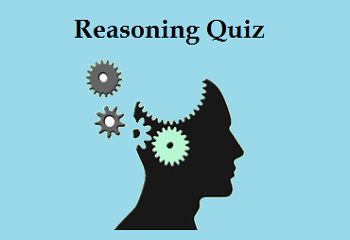Hello Aspirants. Welcome to Online Quantitative Aptitude section in AffairsCloud.com. Here we are creating question sample From all topics , which are Important for upcoming IBPS exams. We have included Some questions that are repeatedly asked in exams.
1-5: There are four companies, namely AA, BB, CC, and DD. The following table shows the total cost and total sales of these companies for their different products. Complete the table on the basis of given information and answer the following questions.
For companies BB and DD, the ratio of sales to asset is same and equal to 3. However, sales of company BB is half that of company DD. Profit of company CC is 25% which is also equal to two-thirds of the profit of company AA.
Profit of company BB is same as that of company AA which amounts to 25% of BB sales. Cost of company DD is twice the sale of company CC.
| AA | BB | CC | DD | |
| Sales | 1,00,000 | |||
| Cost | 1,00,000 | |||
| Profit | ||||
| Assets | 25,000 | 35,000 |
- What are the assets of DD company?
A. Rs 37,500
B. Rs 1,25,000
C. Rs 1,00,000
D. Rs 2,50,000C. Rs 1,00,000
Explanation:
For the questions to be answered, first complete the table based on given information.
Cost of CC is 1,00,000 and given that the profit % is 25%, so sales of CC = 125/100 * 1,00,000 = 1,25,000. This means profit of CC = 1,25,000 – 1,00,000 = 25,000
Profit of CC is two-thirds of the profit of company AA, so profit of AA = 3/2 * 25,000 = 37500. Sales of AA = 1,00,000. So cost of AA = 1,00,000 – 37,500 = 62,500
Profit of BB = Profit of AA = 37,500. Also, profit of BB = 25% of sales of BB. So, 37,500 = 25/100 * sales of BB. So, sales of BB = 1,50,000. This gives cost of BB = 1,50,000 – 37, 500 = 1,12, 500.
Cost of DD is 2 times sales of CC. So, cost of DD = 2 * 1,25,000 = 2,50,000. Given sales of BB is half of DD. So, sales of DD = 2 * 1,50,000 = 3,00,000.
And so on find remaining missing parts.
*See the complete table next answer & solution - Find the ratio of profit to assets of company AA.
A. 2 : 7
B. 3 : 2
C. 3 : 4
D. 5 : 3B. 3 : 2[table]AA BB CC DD Sales 1,00,000 1,50,000 1,25,000 3,00,000 Cost 62,500 1,12,500 1,00,000 2,50,000 Profit 37,500 37,500 25,000 50,000 Assets 25,000 50,000 35,000 1,00,000 [/table]
- What is the cost of company CC?
A. Rs 37,500
B. Rs 1,25,000
C. Rs 1,00,000
D. Rs 2,50,000C. Rs 1,00,000 - What is the profit percentage of company DD?
A. 20%
B. 25%
C. 28%
D. 30%A. 20% - What is the ratio of the profits of company CC and company DD?
A. 1 : 3
B. 2 : 1
C. 1 : 2
D. 6 : 5C. 1 : 2 - There are 4 red balls, 5 blue balls and 3 green balls in a jar. 2 balls are drawn at random. Find the probability that both are either green or red.
A. 2/31
B. 2/33
C. 1/22
D. 3/22D. 3/22
Explanation:
Case 1 : 2 green balls:
Prob = 3C2 / 12C2 = 1/22.
Case 2 : 2 red balls:
Prob = 4C2 / 12C2 = 1/11.
So total prob. = 1/22 + 1/11= 3/22 - A person drove at a speed of 45 km/hr from home to office. Returning over the same route, he got stuck in traffic and took an hour longer. Also he could drive only at speed of 40 km/hr. How many kilometres did he drive each way?
A. 275 km
B. 360 km
C. 250 km
D. 310 kmB. 360 km
Explanation:
When we are given difference in timings for the same distance, the distance can be find as:
Distance = s1 * s2 / s1 – s2 * [Difference in time]
So here distance = 45*40/(45-40) * 1 = 360 - A alone can complete a wok in 16 hours and B alone in 12 hour. Starting with A they work on alternate hours. The total work will be completed in
A. 13 5/7 hours
B. 13 3/4 hours
C. 13 hours
D. 12 hoursB. 13 3/4 hours
Explanation:
LCM (16, 12) = 48
So let total work = 48
So A’s efficiency = 48/16 = 3
And B’s efficiency = 48/12 = 4
2 days work (A+B) = 3+4 = 7
Multiply by 6 both side
12 days work (A+B) = 42
Remaining work = 48-42 = 6
Now A’s turn, efficiency of A is 3 and remaining work is 6, so he will complete remaining work in 6/3 or 2 days but he has to work for 1 day only. So on 13th day he completes his 3 parts of work. And now the remaining work is 6-3 = 3 which is to be done by B on 14th day.
Efficiency of B is 4, so he will do 3 parts of work in 3/4 day
So total 13 3/4 days. - x2 – 9x = 0; y – √81 = 0
A. x ≤ y
B. x ≥ y
C. x > y
D. No relationshipA. x ≤ y
Explanation:
x2 – 9x = 0
x(x-9) =0
x = 0, 9
y – √81 = 0
y = √81
y = 9
put on number line
0 9
When y = 9, y ≥ x
So y ≥ x - A trader bought two horses for Rs 19,500. He sold one at a loss of 20% and the other at a profit of 15%. If the selling price of each horse is the same, then their cost prices are respectively?
A. 10,000 and 9,500
B. 11,500 and 8,000
C. 12,000 and 7,500
D. 10,500 and 9,000B. 11,500 and 8,000
Explanation:
Let CP of 1 = x, then of other = 19500 – x
One at loss of 20%, other at 15% gain. SP is same
So, 80/100 * x = 115/100 (19500-x)
80x + 115x = 115*19500
x = 115*19500/195 = 11500



